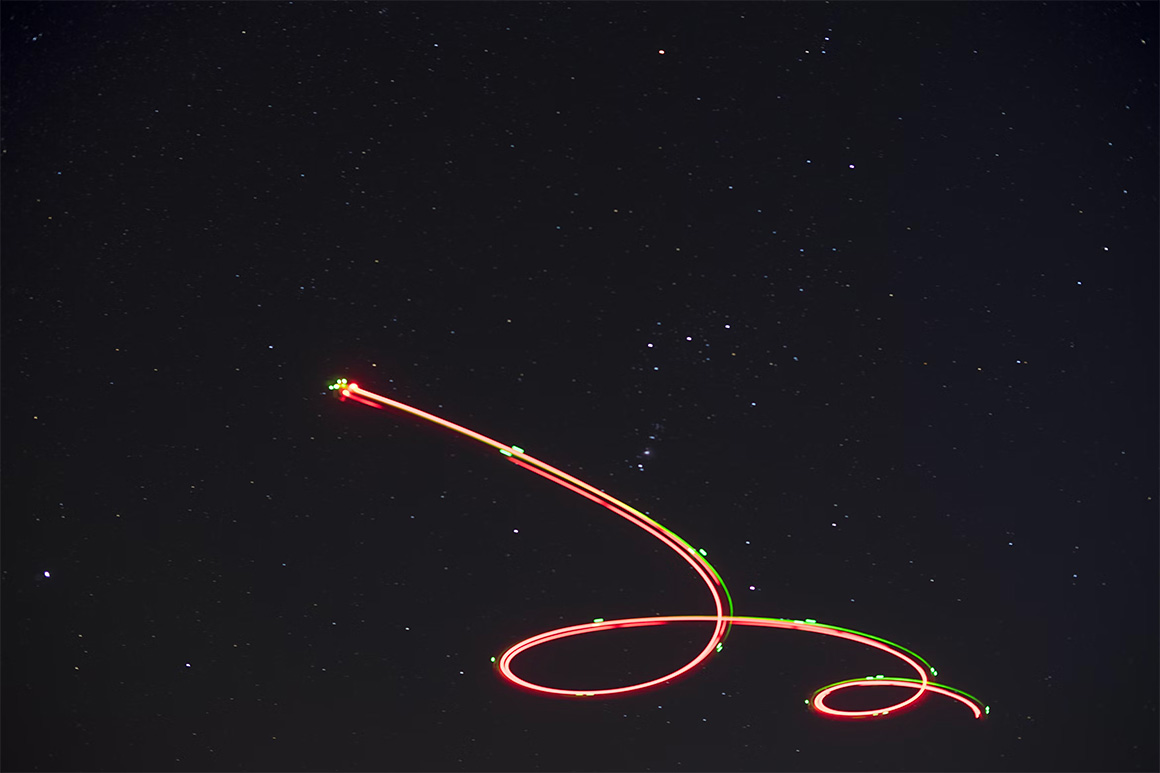‘New territory’: America’s top aerospace sleuths join UFO hunt

“We’re stepping in a new territory,” said Ryan Graves, a former Navy fighter pilot and defense contractor who is co-chairing AIAA’s Unidentified Aerospace Phenomena Community of Interest. He’s joined by Ravi Kopparapu, a planetary scientist at NASA who is studying the potential habitability of Earth-like planets.
“This topic is not for everyone,” added Graves, who came forward with his own experience with UFOs hovering over his F/A-18 Hornet fighter jet in 2014 and 2015. “It is not about forcing people to look into this if they are not ready yet. People have to come to terms with it.”
But he said that scores of members of the 30,000-strong AIAA — drawn from aerospace contractors, government agencies, think tanks and startups — have already signed on to the effort and are “super excited about what we are doing.”
“There is more than we can handle right now,” he said, describing those who have come forward to lend their expertise as running the gamut from “people that have 30-plus years at NASA” to “nontraditional members from the tech community.”
“We have to take bits from a lot of different things and combine them together in new ways to get the answers,” he added.
The initiative, which was approved by the AIAA Council of Directors, is expected to be announced on Thursday.
The move comes as Congress has taken additional steps to compel the Pentagon and intelligence agencies to study UFOs and share what they discover with oversight committees and the public.
Among them was the establishment this summer of a more expansive All-domain Anomaly Resolution Office at the Pentagon that is also studying unidentified undersea vehicles. NASA also announced its own UAP study in June.
Meanwhile, new legislation moving through Congress, as part of the annual defense and intelligence policy bills, goes further.
The National Defense Authorization Act passed by the House in July would establish new procedures for current or former government officials to come forward with any information they may have about UFOs without fear of reprisal.
The proposed intelligence bill also directs the Government Accountability Office to undertake a historical recounting of government efforts involving UFOs over the past 75 years, including any recovery of UFO technology or government efforts to spread disinformation about the subject.
The Pentagon is also compiling a report to Congress due at the end of the month on its latest UFO findings. The report is “still scheduled to be submitted to Congress on the 31st,” Pentagon spokesperson Susan Gough said in an email.
But having an established group such as AIAA, founded in 1963 as the principal professional organization for aerospace scientists and engineers, enter the debate is seen by longtime UFO researchers as a turning point.
“We were wallowing in the fringe realm,” said David Marler, executive director of the newly formed National UFO Historical Records Center in Albuquerque, N.M., the largest U.S.-based repository of related archives. “We need people much smarter than ourselves, and from specific disciplines, to provide credibility and layers of expertise to look at the data.”
The AIAA initiative is focused primarily on the flight safety implications of unannounced craft intruding into protected military airspace or traveling dangerously close to commercial flights.
Graves cited as an example the 11 “near misses” since 2019 — involving UFOs coming within 500 feet of an aircraft — that Scott Bray, the deputy director of naval intelligence, reported to Congress in May during its first public hearing on the topic in more than five decades.
“It’s almost like seeing a bullet go past you as a pilot, right?” Graves said. “People have no idea what’s going on. It is going to frighten people.”
The AIAA effort, according to an internal briefing, is being driven by the belief that the uncertainty about UFOs is exposing pilots, passengers and military forces to unaddressed risks.
Its mission statement is “to improve aviation safety by enhancing scientific knowledge of, and mitigating barriers to, the study of unidentified aerial phenomena.” And it contends that “AIAA is singularly situated to serve our government and citizens as a neutral scientific/engineering resource.”
But while the initiative is focused primarily on addressing safety hazards, Graves maintains that the ultimate intent is to learn more about those UFOs that are truly unexplained.
The vast majority of reported sightings can be explained, he believes, such as “a drone that was carried by a hurricane … 500 miles up.”
“Most of it will go into an explained bucket at some point,” Graves said. “Our primary focus is to apply engineering and scientific effort and energy to the anomalous data set. It’s not about focusing on adversarial drone programs or [drone] incursions into military airspace.”
The new AIAA committee studying the hardware of such unexplained craft has a series of studies underway.
It hopes to complete a scientific framework for cataloging the means for detecting UFOs by the end of the year. By the end of 2023, it plans to release its first “State of Tech Report,” followed by a peer-reviewed research manuscript in early 2024 detailing the methodologies for evaluating UFOs.
“The more people, the more disciplines looking at the subject,” Marler said, “the better it bodes for the future, in terms of getting some semblance of understanding of the mystery.”


